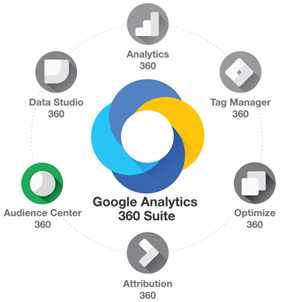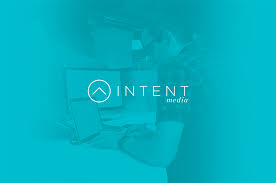Google Audience Center
Google Audience Center
Google Audience Center 360: The DMP You Need
 Google Audience Center 360 is Google’s first data management platform (DMP) for enterprises and a key component to the Google Analytics 360 Suite of integrated tools. In basic terms, it gives marketers an easy way to use their customer data to better target audiences — something you need in your ad technology arsenal to compete effectively.
Google Audience Center 360 is Google’s first data management platform (DMP) for enterprises and a key component to the Google Analytics 360 Suite of integrated tools. In basic terms, it gives marketers an easy way to use their customer data to better target audiences — something you need in your ad technology arsenal to compete effectively.
By bringing together all of your data — connecting Google Analytics 360 with DoubleClick, third-party data, and more — Audience Center 360 provides a unified view of your customers, enabling you to learn, optimize, and inform your testing and advertising.
Leveraging Blast’s superior Google Analytics expertise, you can tap into valuable insights and truly unleash the potential of Google Audience Center 360.
Improve Your Accuracy, Reach, and Frequency
Audience Center 360, which complements Google’s other ad technology offerings to create a “one-stop shop” for marketers, makes it easy to access and understand your data, but more importantly, take action.
With just a few clicks, you can find, expand, and reach new audiences, including your most valuable ones, with the right message at the right time, across different channels and devices, and at scale.
Audience Center 360 Capabilities at a Glance:
![]() Brings together all of your data from your various sources (Google and third-party) for a unified customer view.
Brings together all of your data from your various sources (Google and third-party) for a unified customer view.
![]() Enables you to easily slice and dice campaign targeting with real-time data to address your specific needs.
Enables you to easily slice and dice campaign targeting with real-time data to address your specific needs.
![]() Delivers “zero discrepancy” match back through Google’s integrated, universal cookie tracking methodology.
Delivers “zero discrepancy” match back through Google’s integrated, universal cookie tracking methodology.
![]() Helps you take action and turn learnings into better ads, with native integration to AdWords and DoubleClick.
Helps you take action and turn learnings into better ads, with native integration to AdWords and DoubleClick.
Need Help with Google Audience Center 360?
As a long-time Google Analytics Certified Partner, Blast has deep expertise helping clients implement various Google tools to evolve their organizations.
Our team of Audience Center 360 consultants are available to jump right in. We’ll help you understand how to best leverage this DMP and cover Google Audience Center 360 pricing.
Strategy, Implementation, Optimization, and Training
Blast’s unique, proven, data-driven process is key to our success in helping you gain maximum, long-term value from Google Audience Center 360.
Strategy
We work diligently to understand your business, needs, challenges, and opportunities, helping you develop meaningful and achievable goals.
Implementation
We then connect your goals and strategies with specific tactics to get you up, running, and succeeding with Google Audience Center 360.
Optimization
Leveraging key analyses and learnings at each step of our engagement, we continually seek ways to gain incremental value from Google Audience Center 360.
Training
Our Google Audience Center 360 consultants provide ongoing education, training, and other support to guide your sustained success.
Benefits
- Set up, manage, and monitor your Audience sources, such as the global site tag, an App analytics provider, or a YouTube channel.
- Create new segments based on the Audience sources you’ve set up.
Learn more about the people who make up your data segments, such as their demographics, interests, locations, and devices.
How Audience manager works
To find the Audience manager, click the tools icon in the top right corner of your screen and look under “Shared library.” Within the page menu of Audience manager you’ll find 3 sections: Audience sources, Audience segments, and Audience insights.
Audience sources
Audience manager starts with you adding sources of first-party data into Audience sources. Based on these Audience sources you can create segments comprised of your data. You can add the following audience sources:
- Global site tag: Collect data from your website to advertise to people who visited your website. You can set up granular user attributes used for personalized creatives.
- Google Analytics: Import audience segments built in Google Analytics to reach them with Google Ads. You can set up granular user attributes used for personalized creatives.
- YouTube: Advertise to people who have seen your channel, track what people do after watching video ads, and drive clicks with call-to-action overlays.
- Google Play: Create your data segments based on current app users and in-app purchasers.
- App analytics: Link a third-party app analytics provider (including Firebase) or your own software development kit (SDK) to your account to advertise to people who use your app.
- Customer data: Upload customer contact information to show ads to your customers while they browse across Google’s properties like Google Search, YouTube, or Gmail.
Your data segments
Audience segments is where you create new segments comprised of your data based on the Audience sources you’ve added. You can also view any previously created segments. The Audience segments table helps you manage your data segments by searching, sorting, filtering, applying labels, deleting, and grouping segments.
Audience insights
Audience insights use Google’s network data to help you understand more about your audience segments and recognize key patterns and opportunities. It breaks down segments comprised of your data by affinity categories, in-market categories, age, gender, geography, devices, and more. This tool provides insights that can be translated into practical campaign decisions to attract new people or optimize creatives.
Berita Informasi Terbaru
Berita Informasi Terbaru
Berita Informasi Terbaru
Berita Informasi Terbaru
Berita Informasi Terbaru
Berita Informasi Terbaru
Berita Informasi Terbaru
Berita Informasi Terbaru
Berita Informasi Terbaru
Berita Informasi Terbaru
Berita Informasi Terbaru
Berita Informasi Terbaru
Berita Informasi Terbaru
Berita Informasi Terbaru
Berita Informasi Terbaru
Berita Informasi Terbaru
Berita Informasi Terbaru
Berita Informasi Terbaru
Berita Informasi Terbaru
Berita Informasi Terbaru
Berita Informasi Terbaru
Berita Informasi Terbaru
Berita Informasi Terbaru
Berita Informasi Terbaru
Berita Informasi Terbaru
Berita Informasi Terbaru
Berita Informasi Terbaru
Berita Informasi Terbaru




